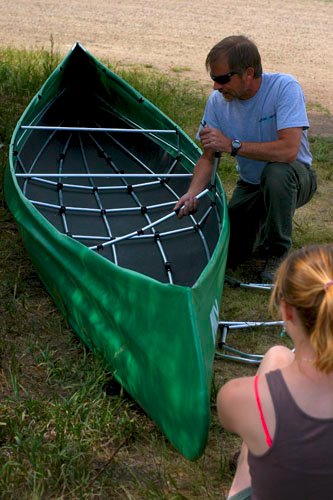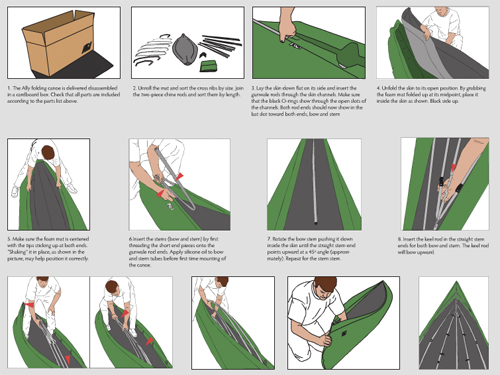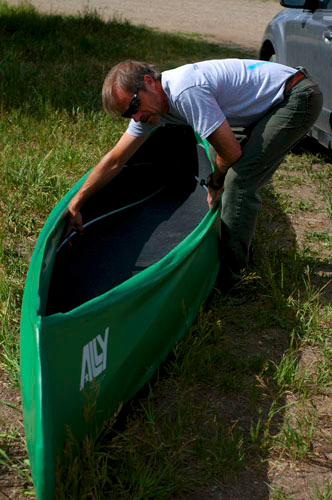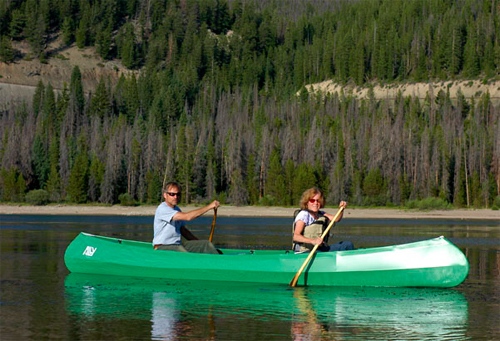The “folding canoe” from Ally arrived in a box that fit in the back seat of my Toyota Corolla. I heaved it into my yard and opened the package to see how a canoe could possibly fit inside.

The Ally canoe is not a new product, but it is little known in the United States. With it, you could ostensibly transport a whole canoe on an airplane-based trip or through the Himalaya on the back of a yak — it weighs about 44 pounds packed up — or you could store the canoe away in a closet.
But the advantages really end there. Other than its packability, we found the Ally to be quite pricey at $2,050 and tricky to assemble. It works well once on the water. . . but to get to that stage? Let’s just start with one detail: This is a canoe that comes with a large mallet in its toolkit. (More on that later.)
Ally Folding Canoe Assembly
In all, there are 40+ pieces to this canoe. This is not a product for those who are not handy, and apparently my girlfriend and I apply as such. After sweating and cursing our way through about two hours of assembly time we were left with a crooked, semi-assembled skin and a lot of left over aluminum pieces.

With bleeding knuckles and a grumpy demeanor I conceded victory to the canoe that day. It would not hit the water the next morning as we’d planned.
I spoke with people at Bergans of Norway, the company that distributes Ally in the United States. The rep explained that, yes, the process is not easy the first time, particularly with a new canoe that has not yet “stretched.”
Fast forward some weeks and my father and I opened the box at the banks of Lake Dillon in Summit County, Colorado. With one failed assembly under my belt, the second attempt marched steadily forward. I easily remembered the flaws of the first try. We spent 15 minutes getting the floor perfectly centered, and within an hour the boat was taking shape.

Ally Folding Canoe Review: A Good Canoe On Water










